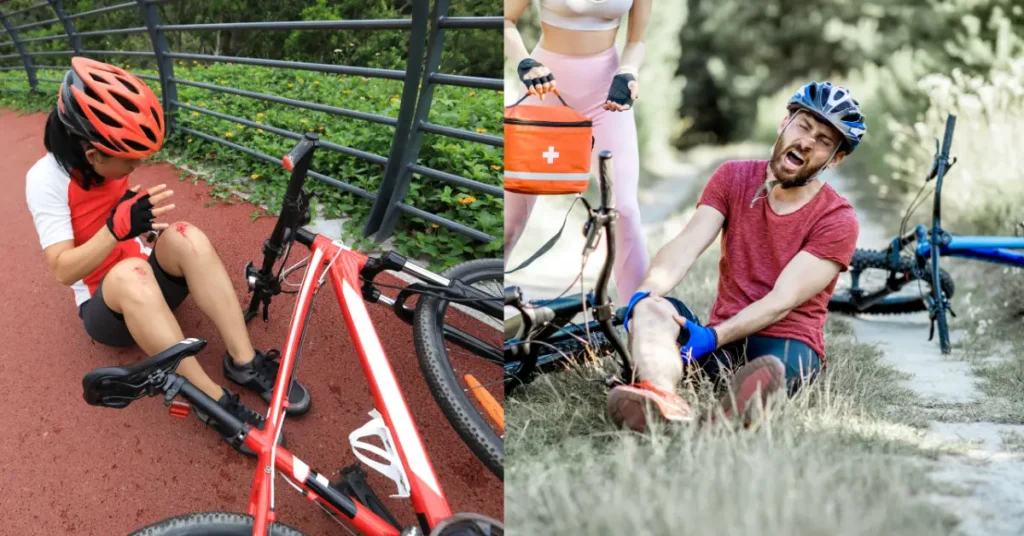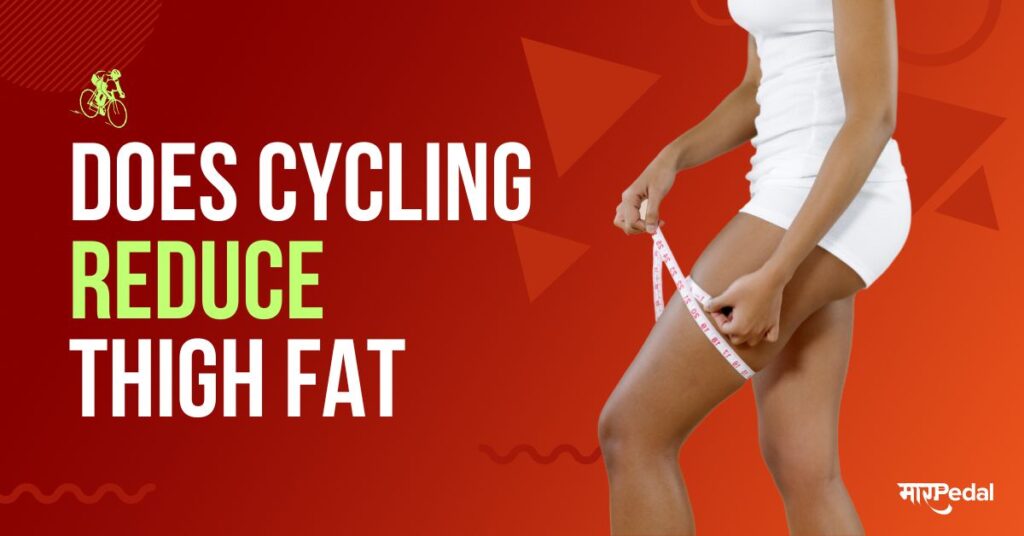
Cycling is a great form of exercise that can help improve your physical fitness & mental health.
However, it is also a physical activity that can put a lot of stress on your body, leading to injuries if not done properly.
In this article, we will explore some tips and techniques to help you prevent injury while cycling.
Understanding Cycling Injuries
Before we delve into how to prevent cycling injuries, it is important to understand the types of injuries that can occur while cycling. Cycling injuries can be broadly classified into two categories:
Overuse Injuries
Overuse injuries are caused by repeated stress on the same area of the body over a period of time. Common overuse injuries in cycling include:

Source: https://bodytonicclinic.co.uk/
- Patellofemoral Pain Syndrome: Pain around the kneecap, caused by repetitive pedaling motions.
- Iliotibial Band Syndrome: Pain on the outside of the knee, caused by friction between the iliotibial band and the knee.
- Carpal Tunnel Syndrome: Numbness or tingling in the fingers, caused by compression of the median nerve in the wrist.
See also: Front Knee Pain When Cycling: Causes, Prevention, And Treatment 🦵
Traumatic Injuries
Traumatic injuries are caused by a sudden impact or fall while cycling. Common traumatic injuries in cycling include:
- Road rash is a type of skin abrasion caused by falling off a bike or skidding on the road. Road rash can be painful and cause skin irritation. To treat road rash, clean the wound with soap and water, apply a sterile bandage, and keep the wound clean and dry.
- Fractures occur when bones in the body are broken due to high impact or trauma. Fractures can be severe and require medical attention. To treat fractures, seek medical help immediately and immobilize the affected area with a cast or splint.
- Concussions can occur when the head hits a hard surface, causing the brain to jolt. Concussions can be serious and require immediate medical attention. To treat concussions, seek medical help immediately and rest until symptoms subside.
Tips to Prevent Cycling Injuries
Now that we have a basic understanding of cycling injuries, let’s explore some tips and techniques to prevent them:

1. Proper Bike Fit
One of the most important things you can do to prevent cycling injuries is to ensure that your bike fits you properly. A bike that is too big or too small can put extra stress on your body and lead to injuries. Some key things to consider when fitting your bike include:
- Saddle Height: Your saddle should be adjusted so that your knee is slightly bent at the bottom of the pedal stroke.
- Handlebar Reach: You should be able to comfortably reach the handlebars without overreaching.
- Stem Length: The stem length should be adjusted so that you are not reaching too far forward or leaning too far back.
According to a study published in the Journal of Injury Prevention, bike malfunctions are a contributing factor in roughly 13% of bike crashes.
2. Warm-up and Stretching
Warming up before a ride and stretching afterward can help prevent overuse injuries.
A good warm-up should include some light cardio to get your heart rate up, followed by some dynamic stretching to get your muscles moving.
After your ride, spend some time doing static stretches to help your muscles recover.
According to a study published in the Journal of Science and Medicine in Sport, warming up before exercise can help reduce the risk of injury by as much as 50%.
3. Build Up Your Endurance
If you are new to cycling, it is important to build up your endurance gradually.
Start with shorter rides and gradually increase the length and intensity of your rides over time.
This will help prevent overuse injuries and allow your body to adapt to the demands of cycling.
According to a study published in the British Journal of Sports Medicine, increasing your training load too quickly can increase your risk of injury by as much as 50%.
4. Wear Protective Gear
Wearing the appropriate protective gear can help prevent traumatic injuries in the event of a fall. This includes:
- Helmet: A properly fitting helmet can help protect your head in the event of a crash.
- Gloves: Cycling gloves can help prevent blisters and protect your hands in the event of a fall.
- Padded Shorts: Padded shorts can help prevent chafing and provide extra cushioning for your sit bones.
According to the National Highway Traffic Safety Administration (NHTSA), wearing a helmet can reduce the risk of head injury by as much as 85%.
What To Wear Cycling: Choosing The Right Gear For Every Weather Condition
In addition to a helmet, consider wearing reflective clothing and using lights to make yourself more visible to drivers.
5. Use Proper Technique
Using the proper technique while cycling can help prevent overuse injuries. Some key things to keep in mind include:
- Pedaling Technique: Focus on pedaling in circles, using both the downstroke and the upstroke.
- Body Position: Maintain a neutral spine position and avoid hunching over the handlebars. Keep your elbows slightly bent and your shoulders relaxed.
6. Pay Attention to the Road

Paying attention to the road and your surroundings can help prevent traumatic injuries. Some things to keep in mind include:
- Avoid Hazards: Keep an eye out for hazards such as potholes, gravel, and debris on the road.
- Be Visible: Wear bright, reflective clothing and use lights to make yourself visible to drivers.
- Obey Traffic Laws: Follow traffic laws and signals to help prevent collisions with other vehicles.
7. Cross Train
Cross training can help prevent overuse injuries by strengthening different muscle groups and preventing muscle imbalances. Some good cross training activities for cyclists include:
- Strength Training: Focus on exercises that target the core, legs, and upper body.
- Yoga: Yoga can help improve flexibility and mobility, which can help prevent overuse injuries.
- Swimming: Swimming is a low-impact activity that can help improve cardiovascular fitness without putting stress on the joints.
8. Rest and Recover
Rest and recovery are essential for preventing overuse injuries.
Make sure to take rest days and allow your body time to recover between rides.
This can help prevent burnout and keep you feeling fresh and energized.
Conclusion
Cycling is a great form of exercise, but it is important to take steps to prevent injury.
By following these tips and techniques, you can stay safe and injury-free while enjoying the many benefits of cycling.
FAQs
How can I protect myself from cycling?
Wearing a properly fitted helmet can help prevent head injuries in a crash. Following the rules of the road, using lights and reflectors at night, and being aware of road hazards can also help you cycle more safely. Consider taking a cycling skills course to build confidence.
How do you stay safe while cycling?
Stay safe while cycling by wearing a helmet and bright clothing, using lights and reflectors at night, following traffic laws, scanning the road for hazards, signaling turns, avoiding distractions like phones, and riding predictably so drivers can see you. Also take care at intersections and ride defensively.
How can you prevent bike accidents?
Prevent bike accidents by checking that your bike is in good working order, wearing protective gear, following traffic laws, being aware of your surroundings, avoiding dangerous conditions, yielding right of way, signaling turns, and riding defensively. Also take a cycling safety course to sharpen your skills.
What are the risk of injury in cycling?
Common cycling injuries include scrapes and bruises from falls, head injuries if a helmet isn’t worn, spinal cord injuries if the head/neck aren’t protected in a crash, damaged knees from clipping pedals, and wrist or collarbone fractures from falling. High-impact crashes pose the greatest risk when cycling.
What is the most common injury in cycling?
The most common cycling injuries are scrapes and minor bruises. However, broken collarbones, damaged wrists, and head injuries like concussions or traumatic brain injuries are also very common if crashes occur at high speeds or impact. Knee injuries can also happen from clipping in to pedals.
Is cycling a high risk sport?
Compared to contact sports, cycling has a relatively low risk of injury when done safely. However, accidents do occur, usually due to factors like poor road conditions, inattentive motorists, or loss of control. So cycling has higher injury risk than low-impact activities, but with proper precautions the risks can be minimized.






